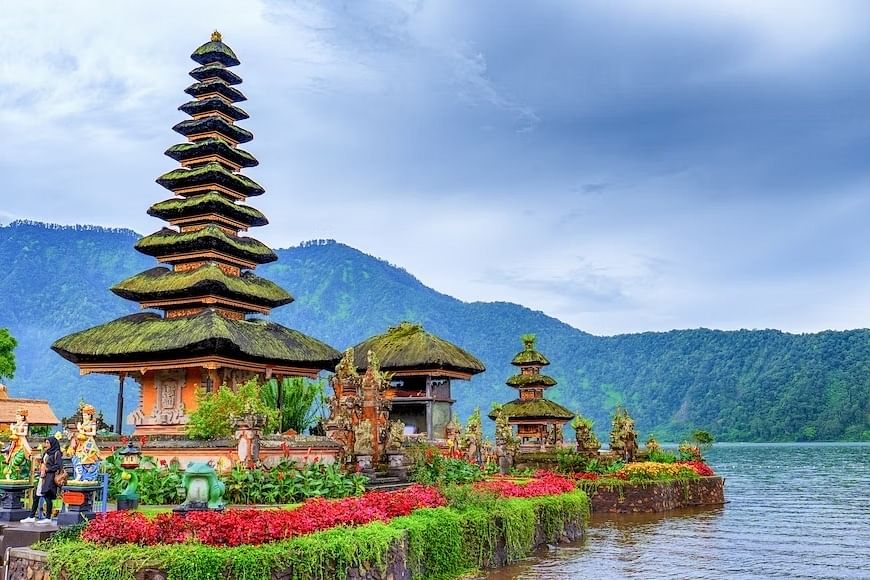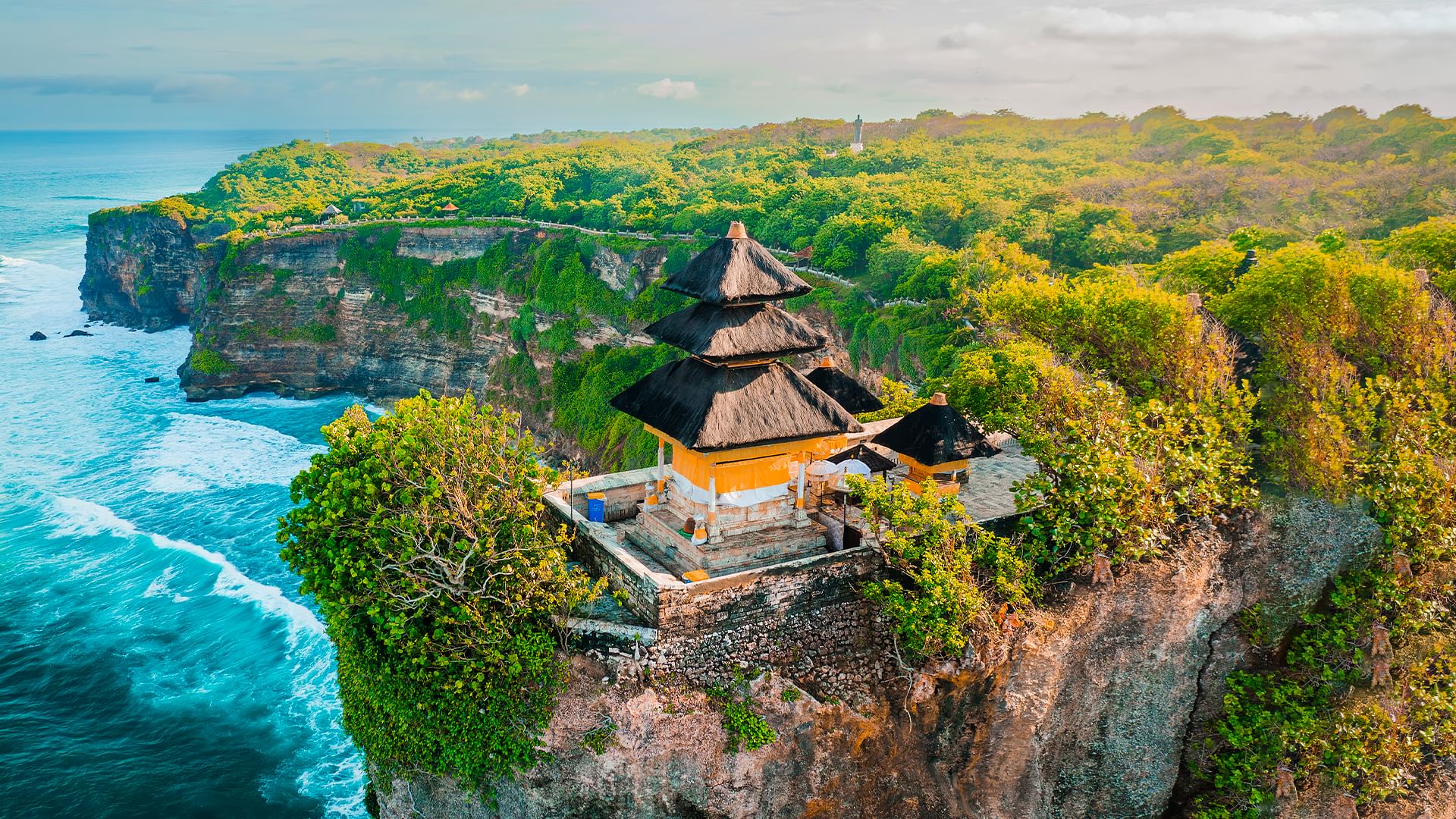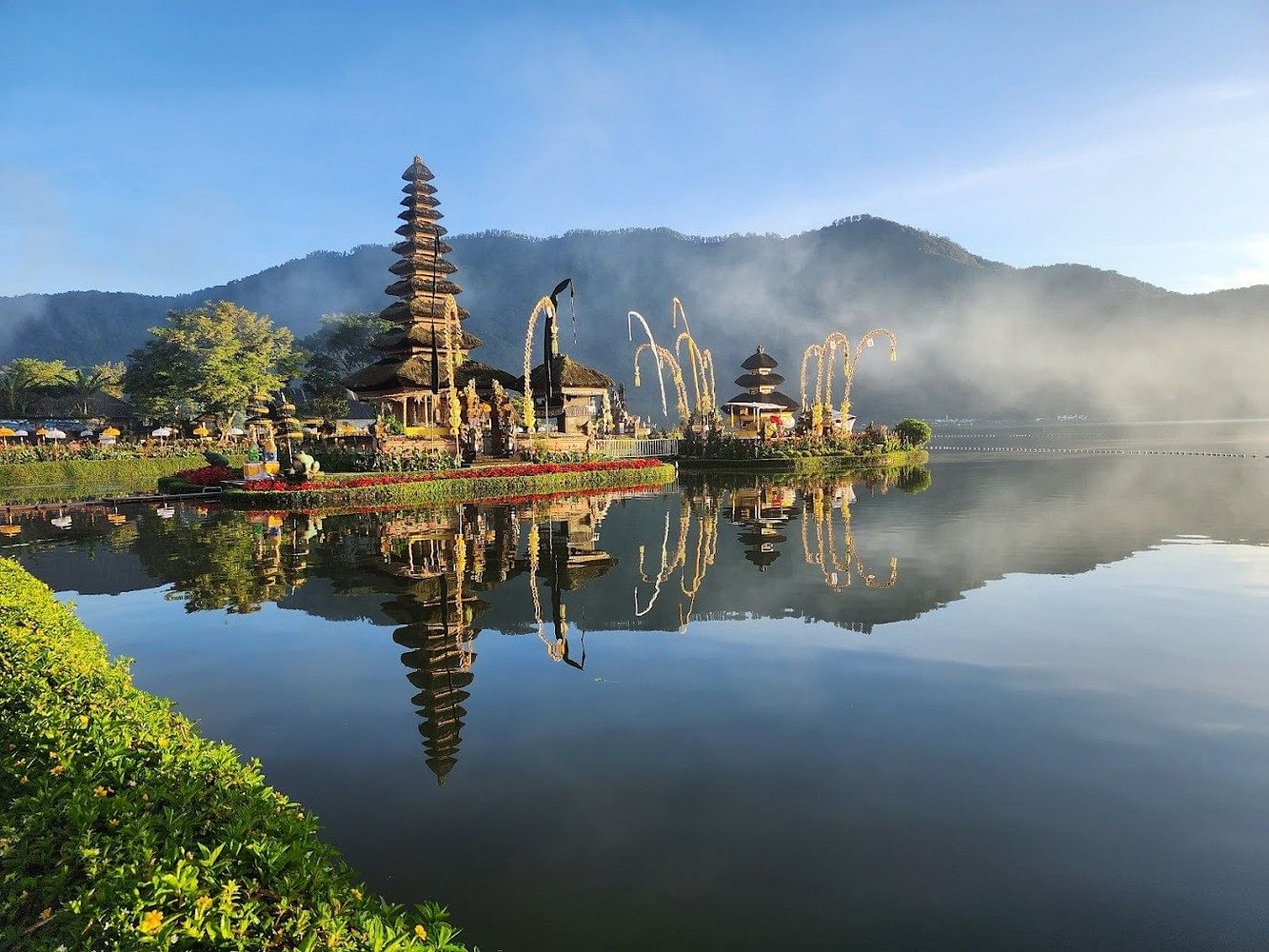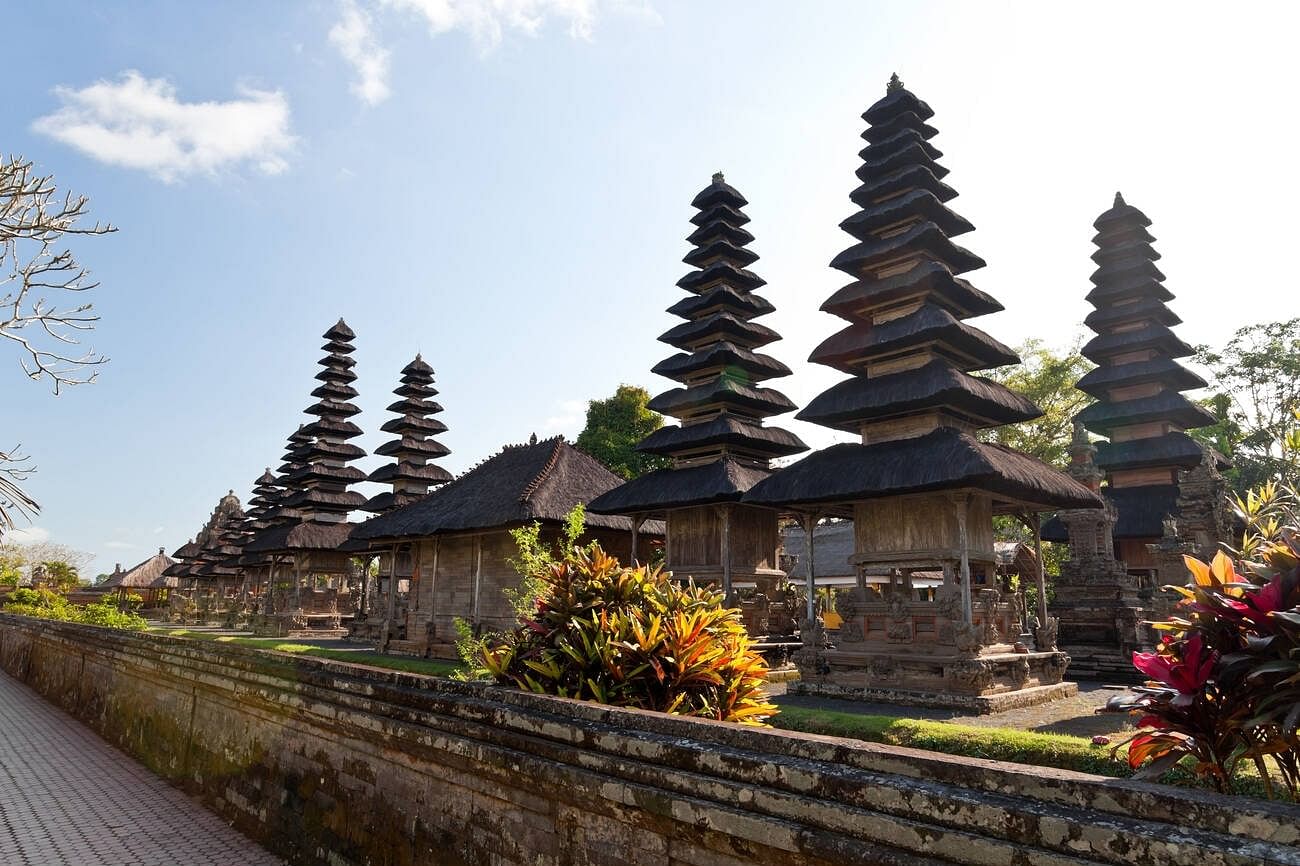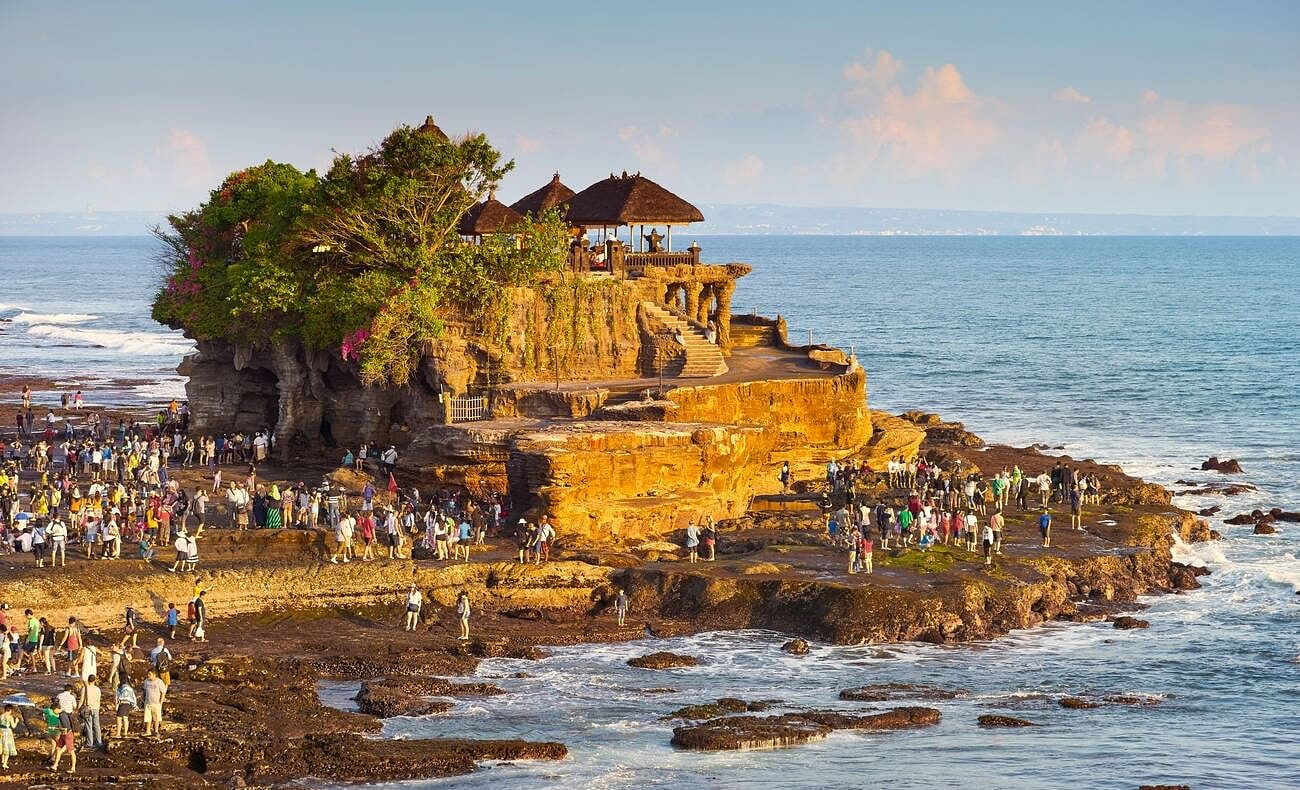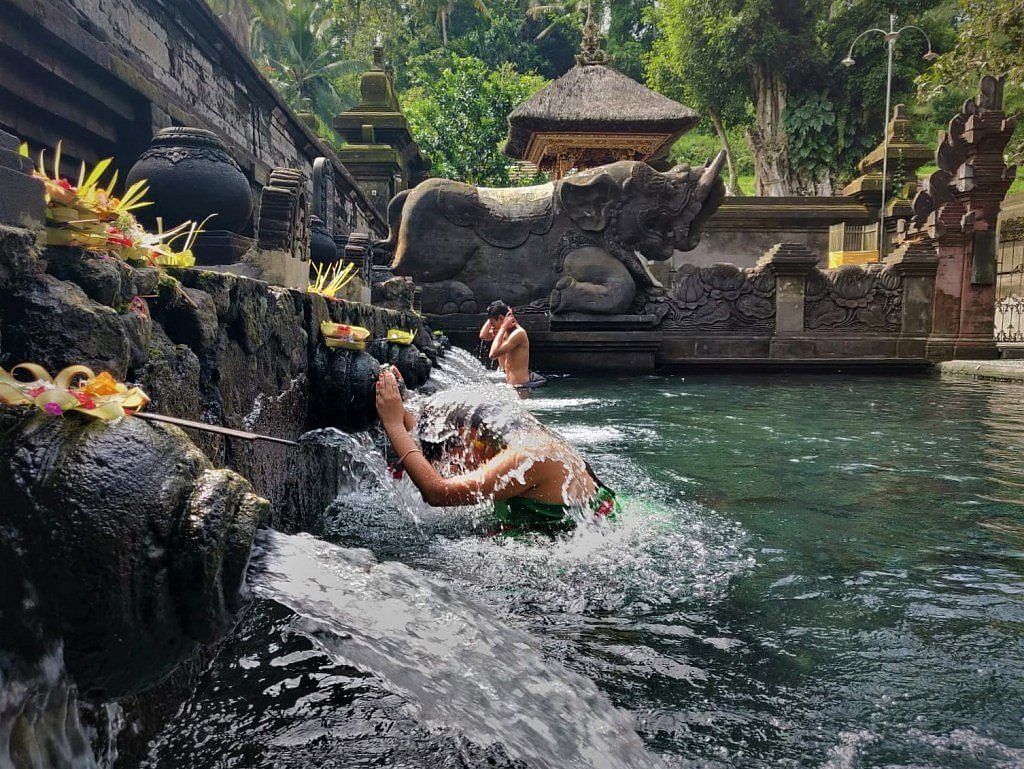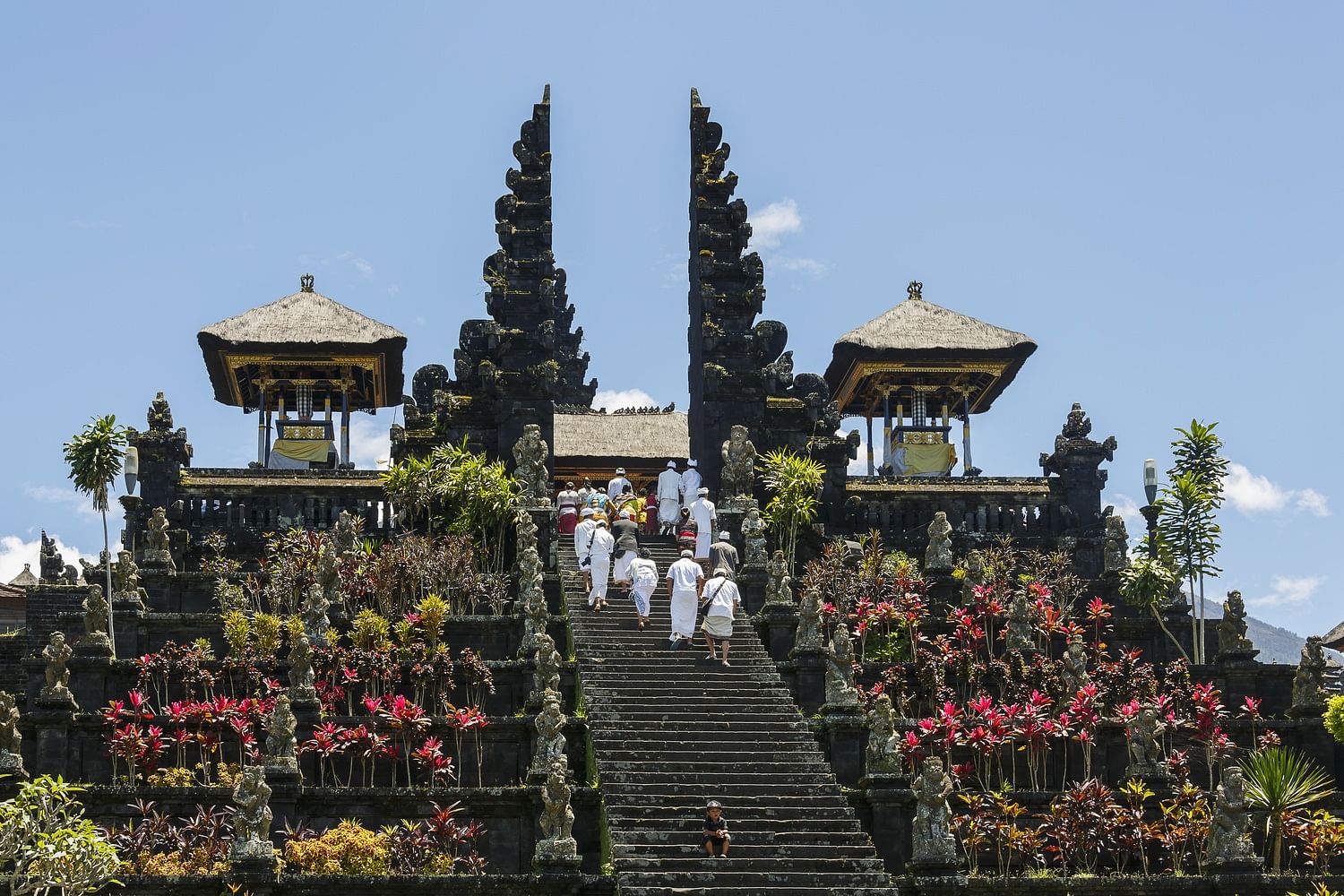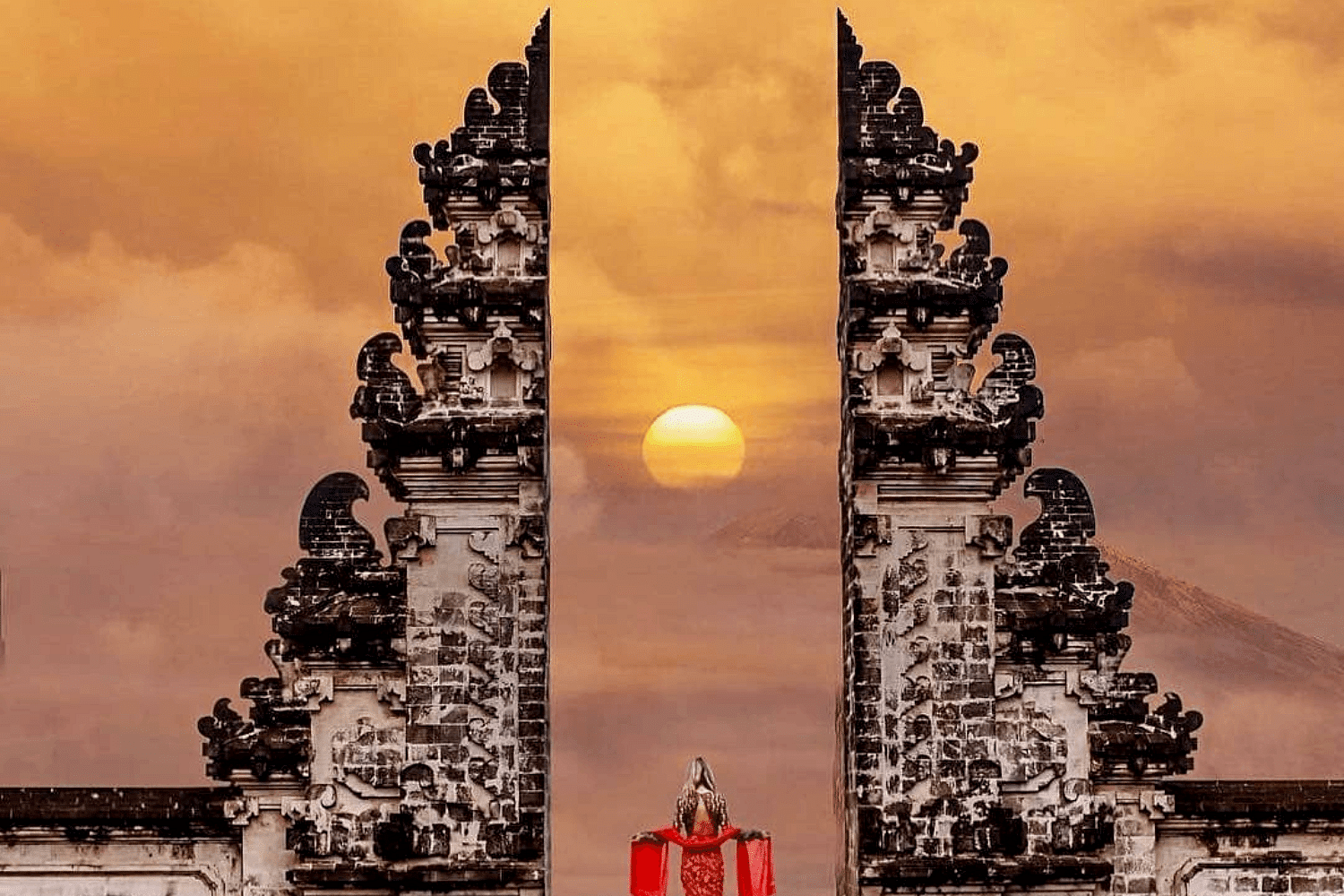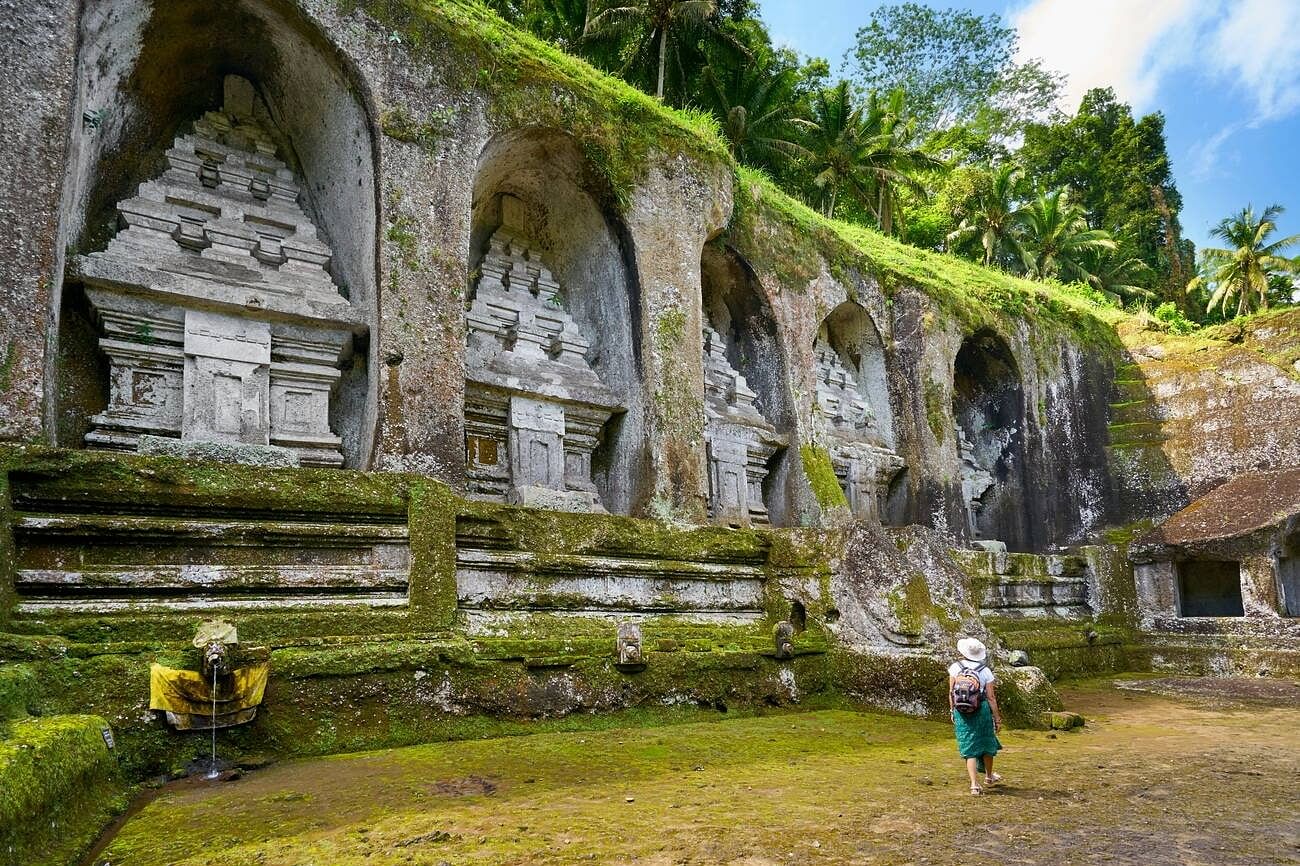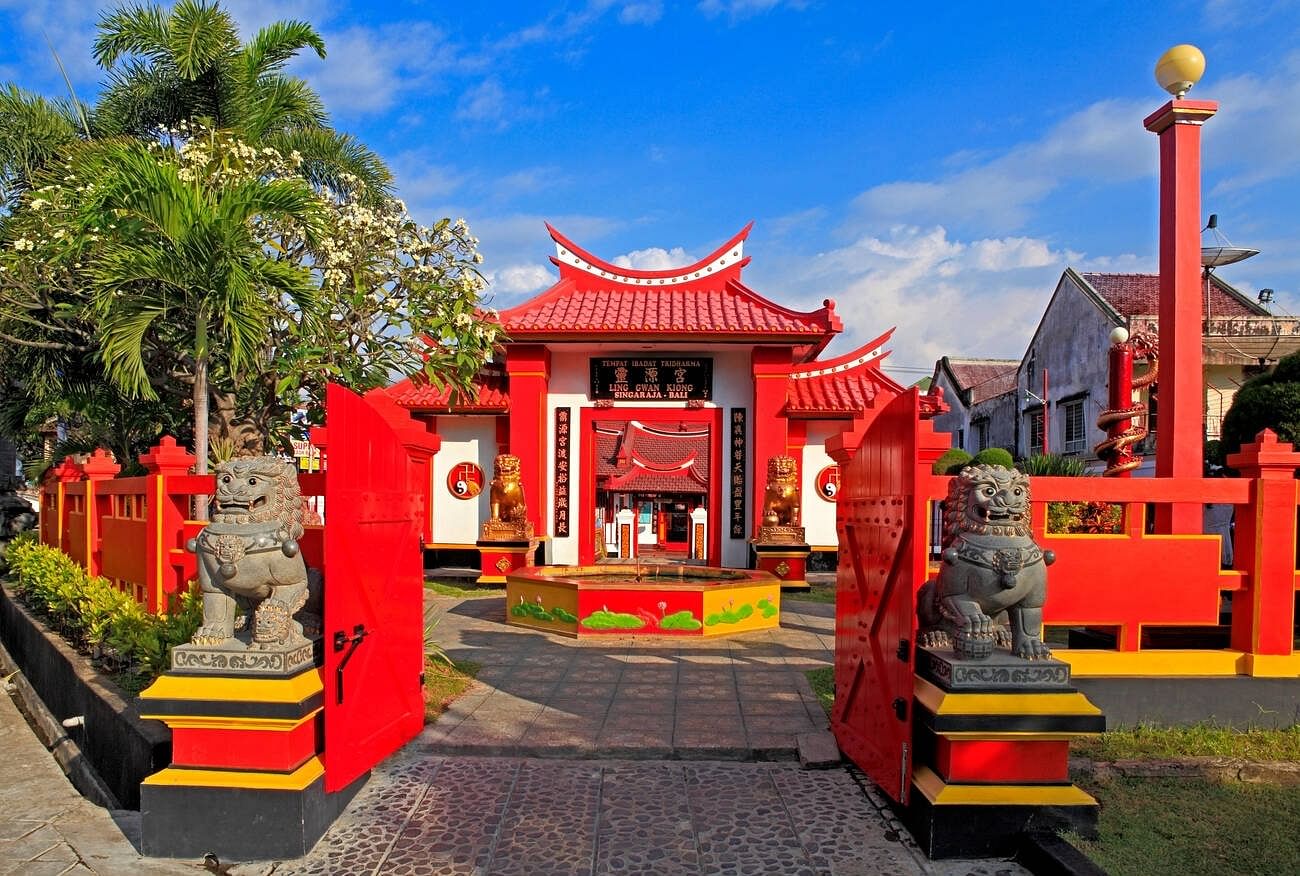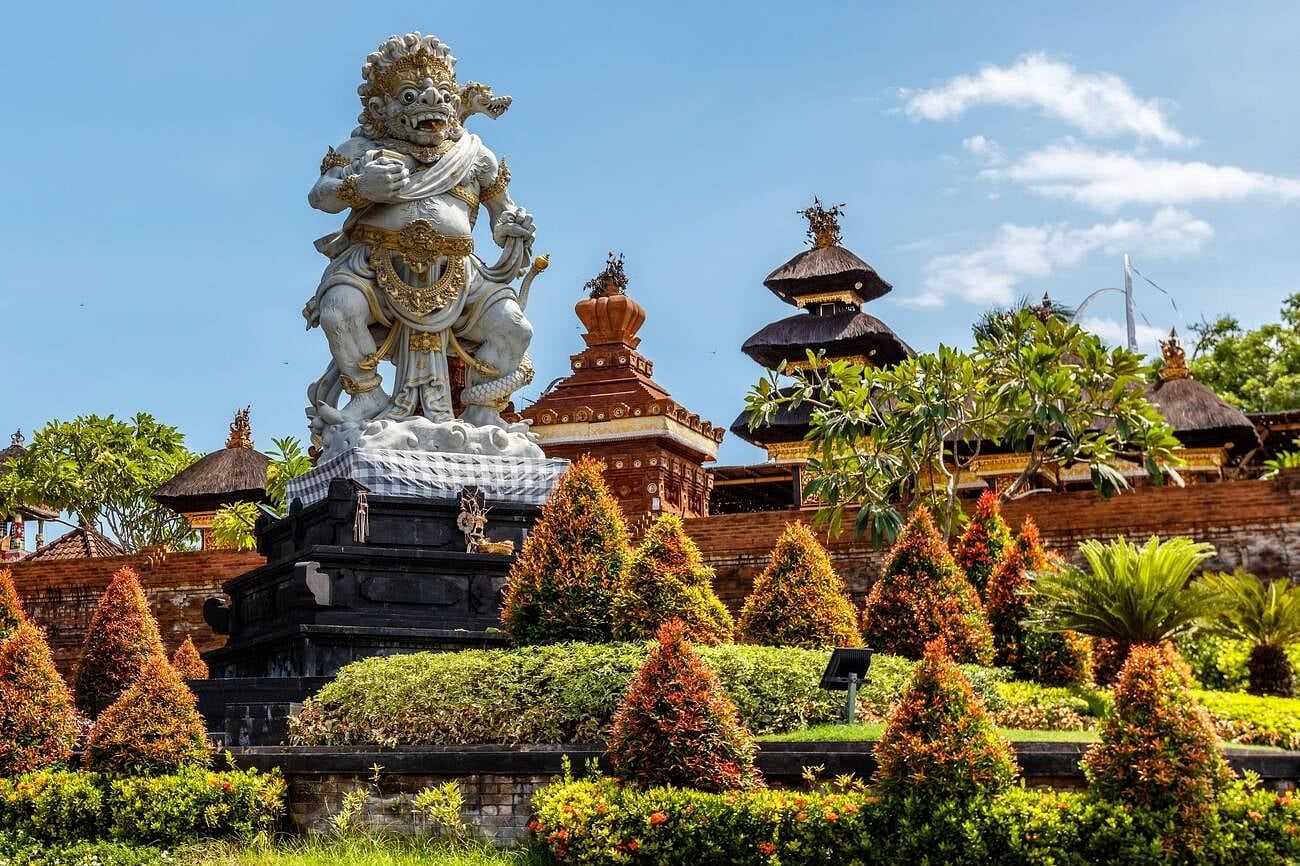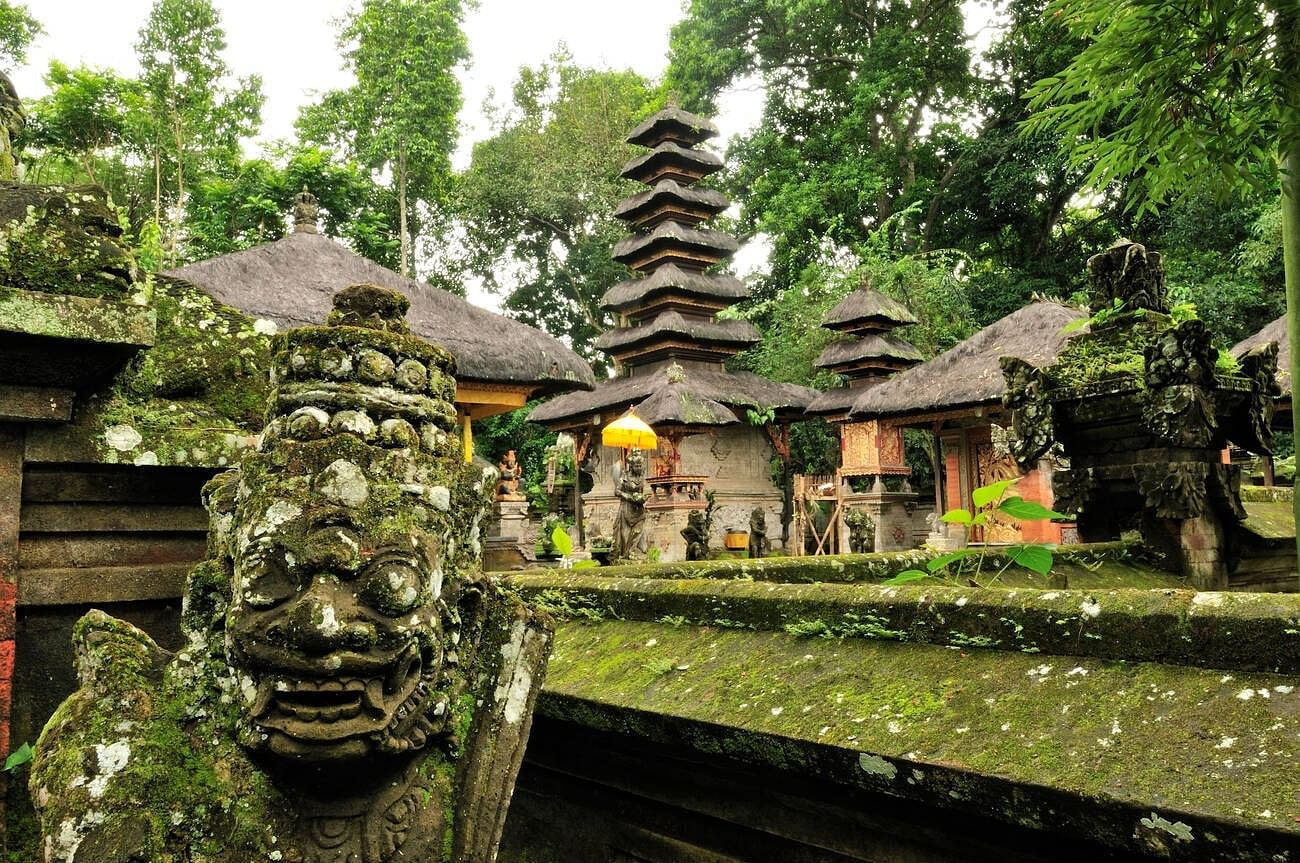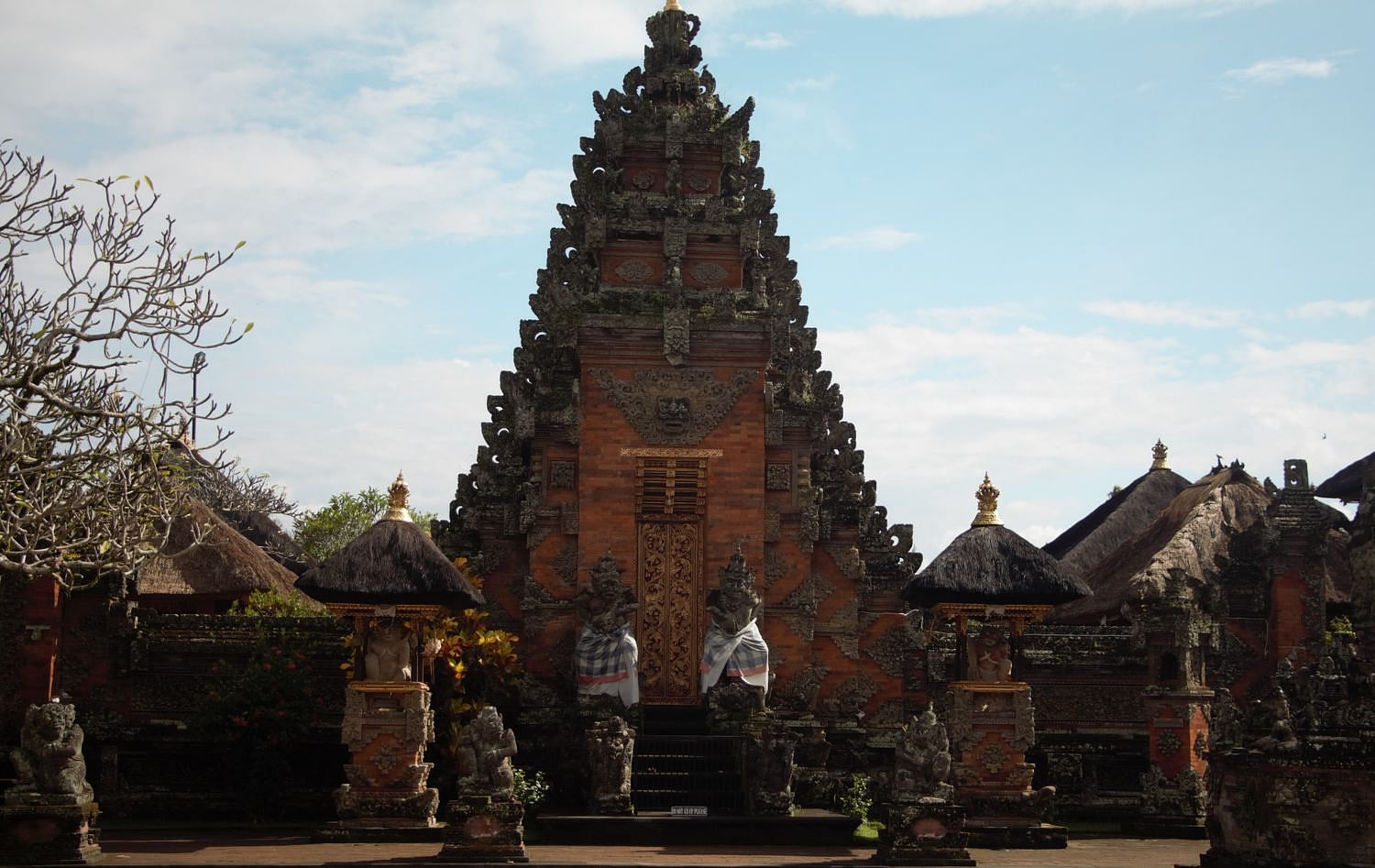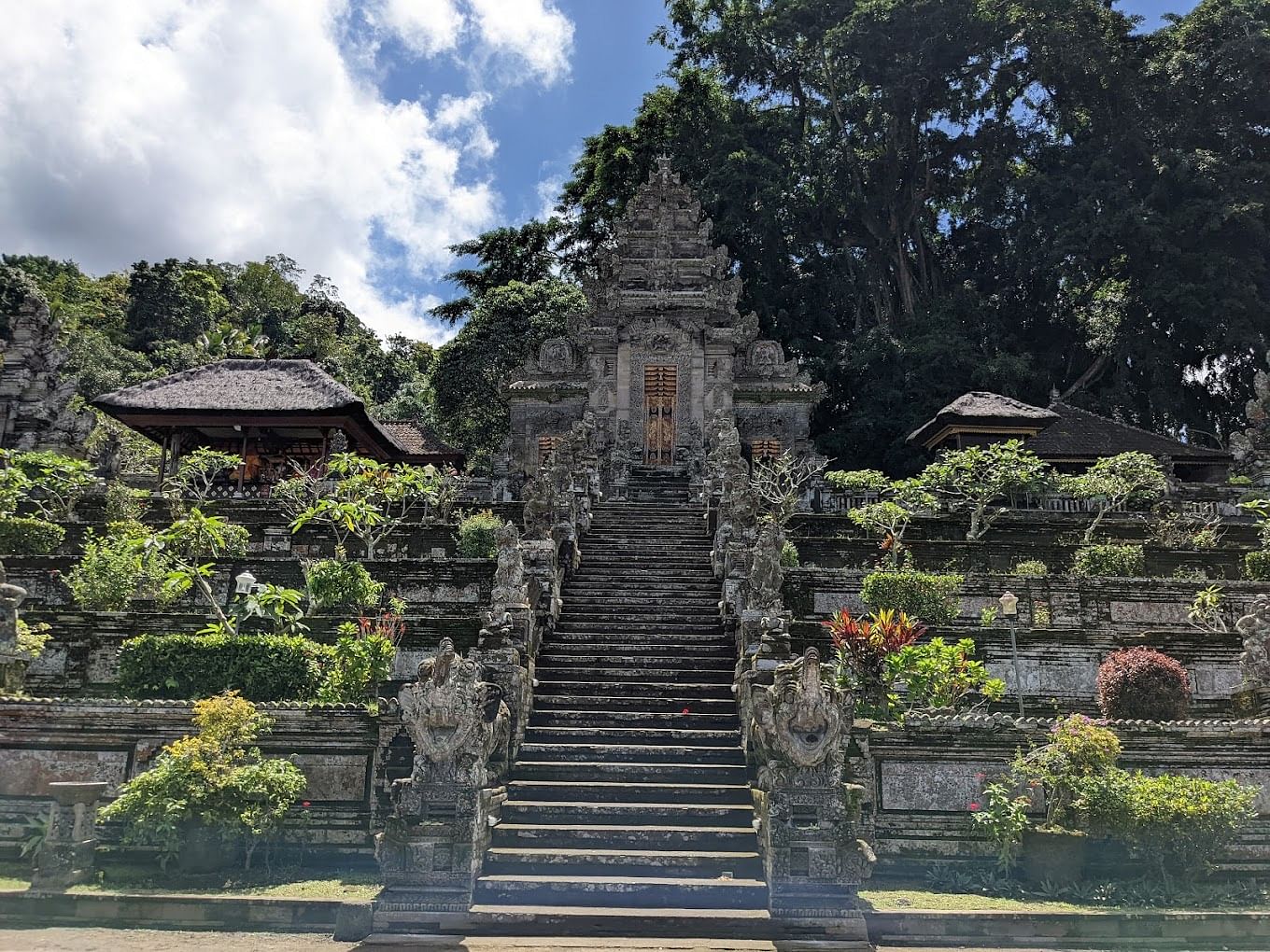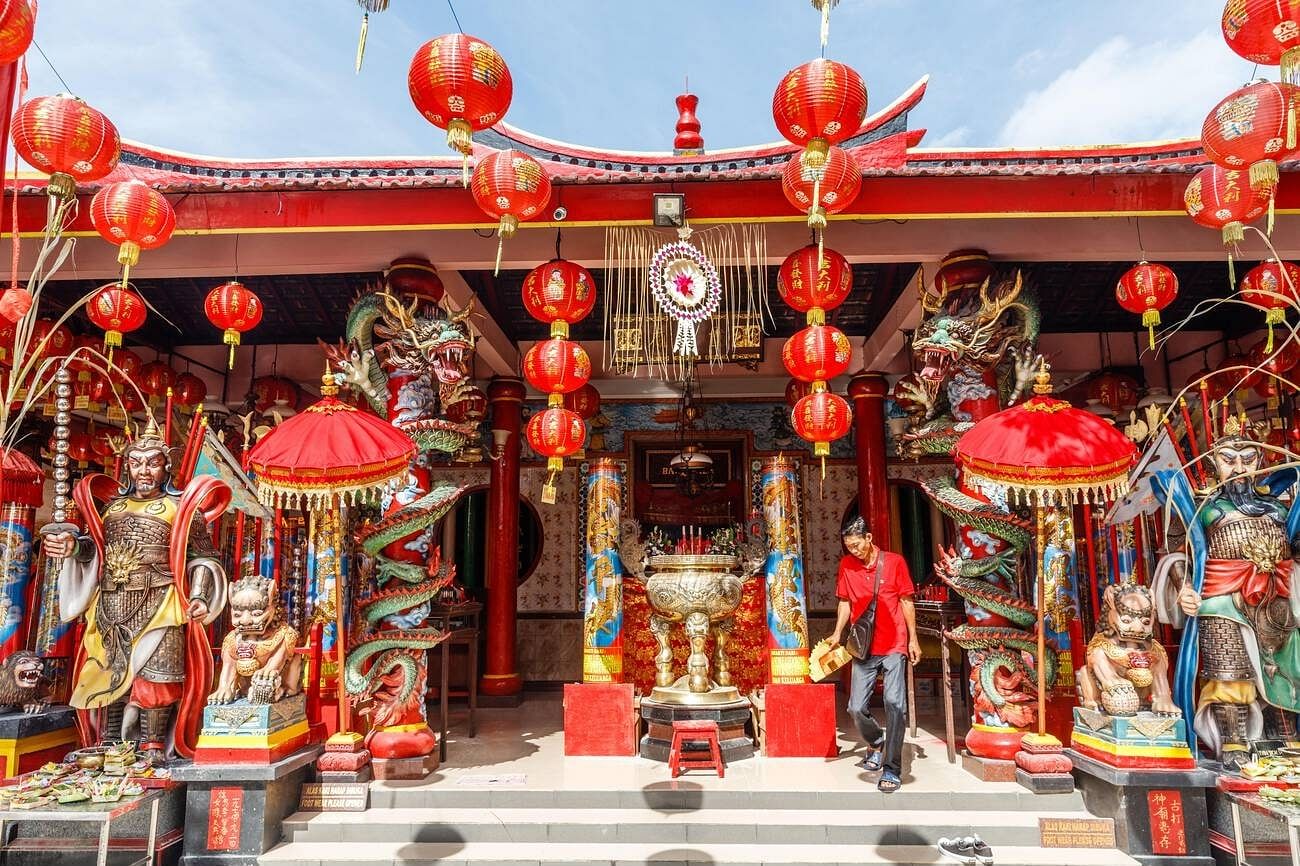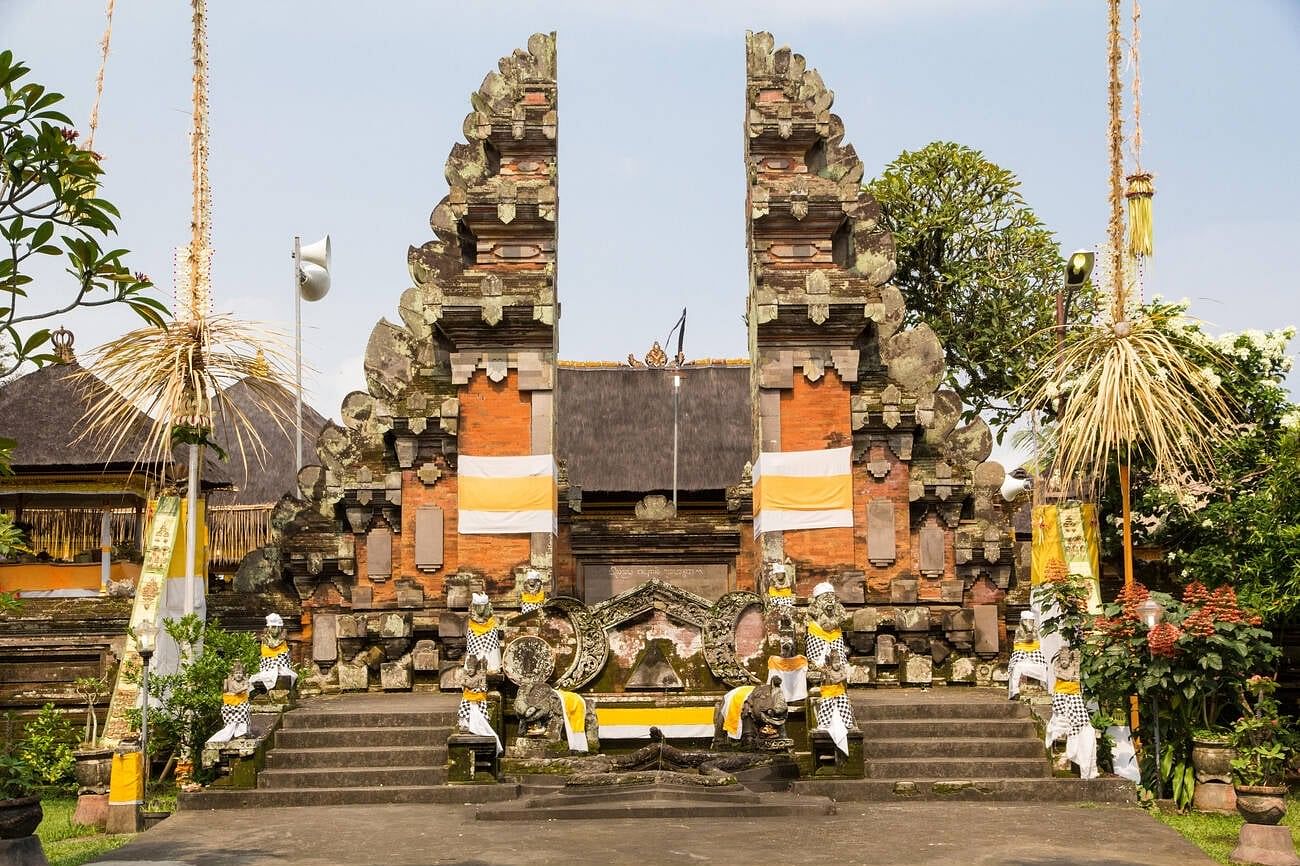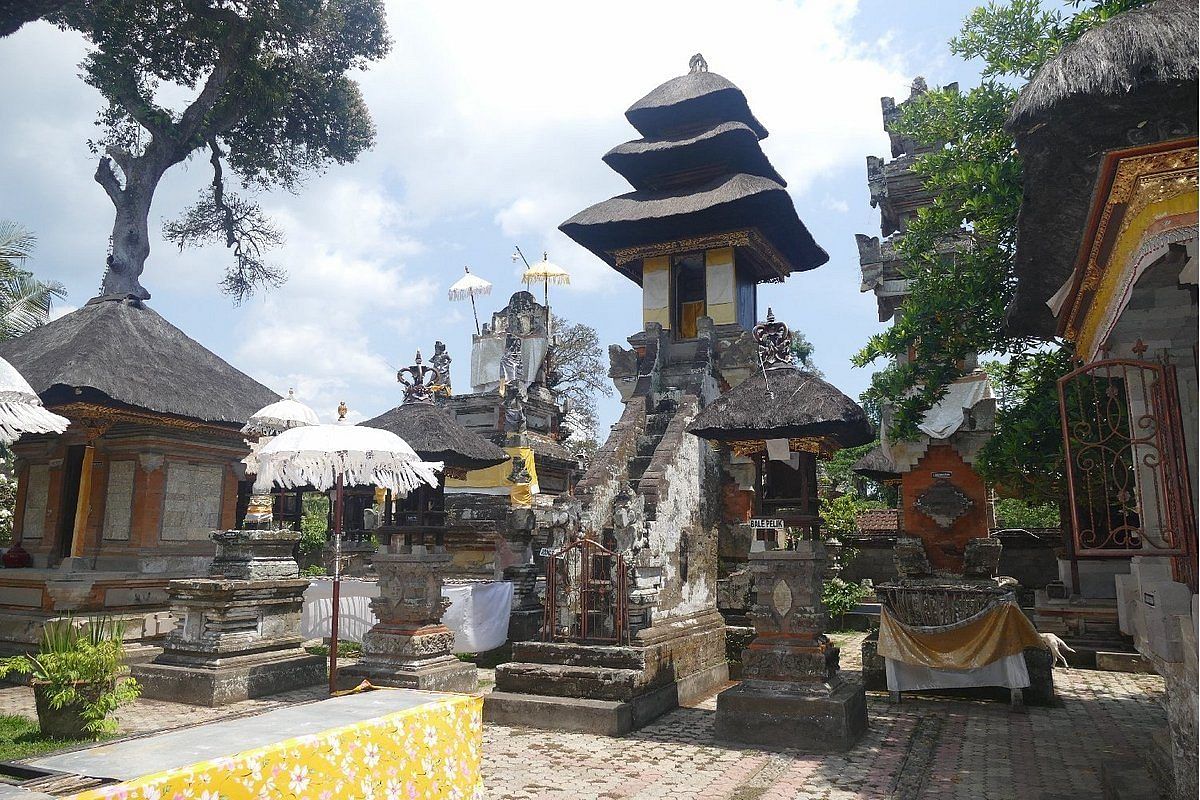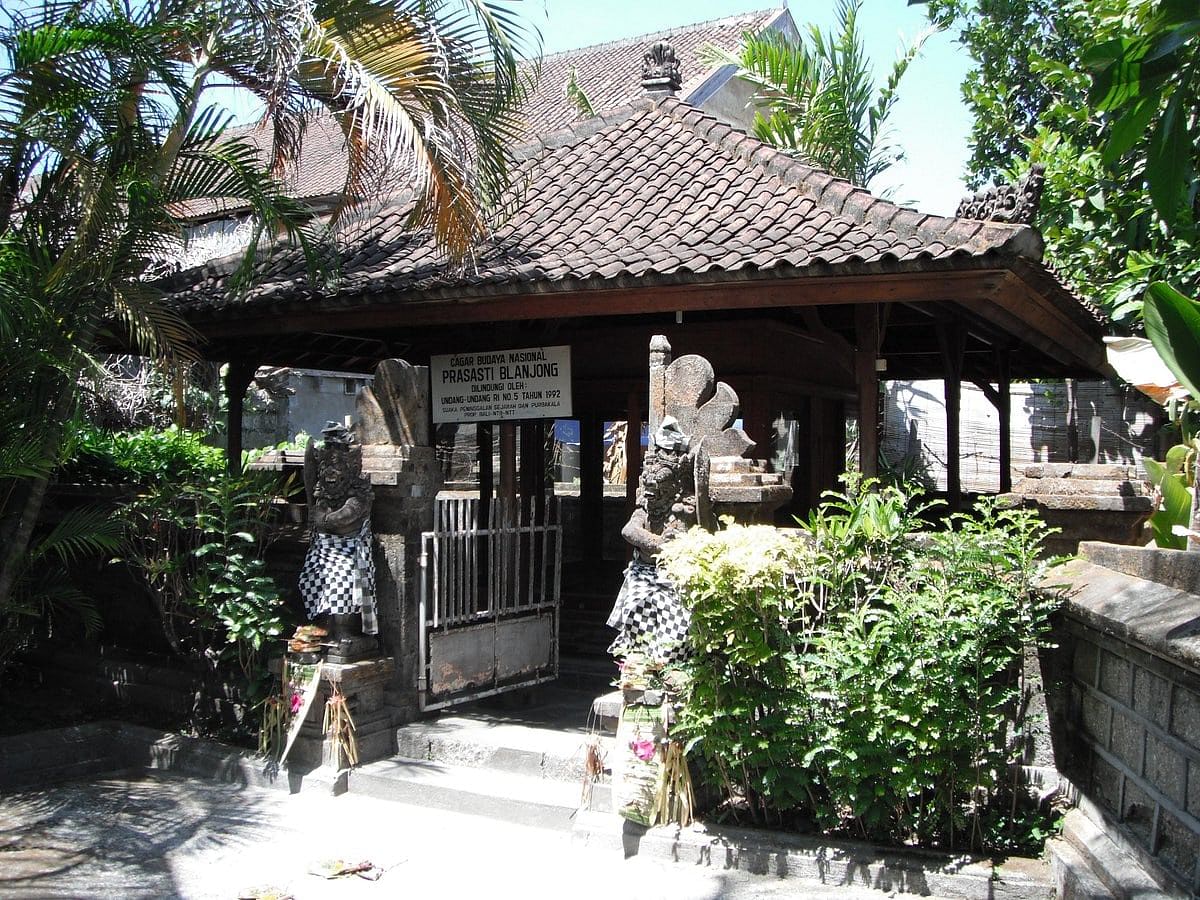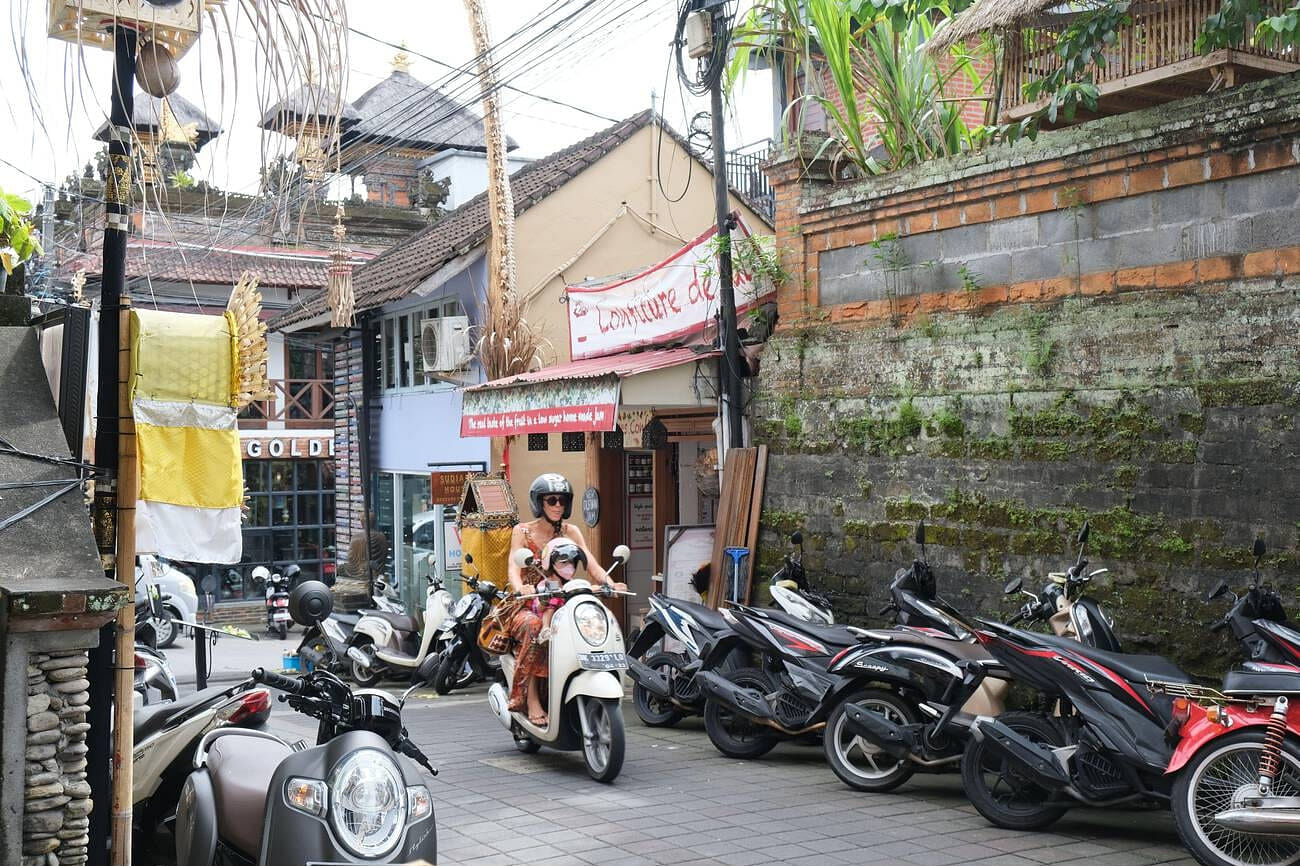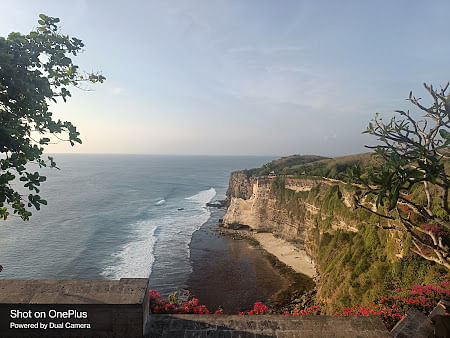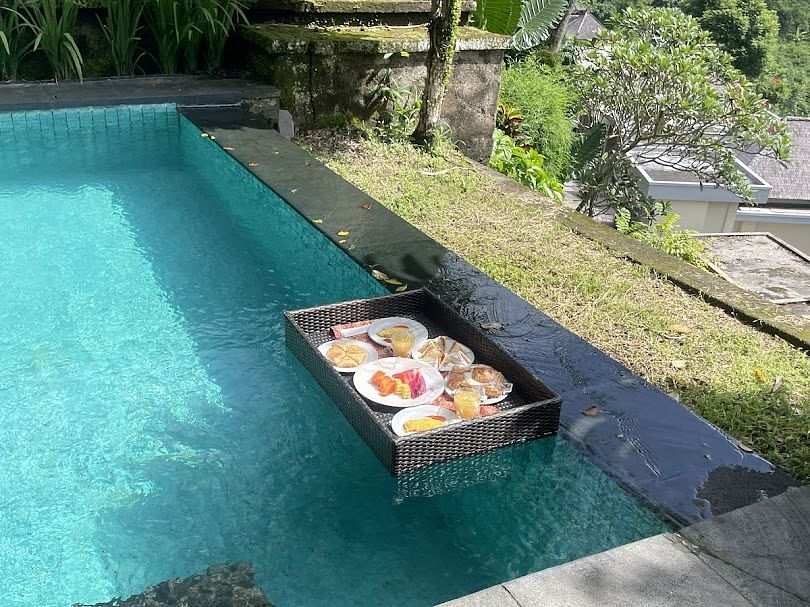Bali's spiritual landscape offers an enchanting journey through centuries-old temples that blend divine beauty with cultural heritage. These must visit temples in Bali showcase the island's deep Hindu traditions, stunning architecture, and mystical atmospheres that captivate millions of visitors annually.
From the dramatic clifftop setting of Uluwatu Temple to the floating illusion of Ulun Danu Beratan, each sacred site tells unique stories of devotion and artistry.
Whether you're seeking spiritual enlightenment, cultural immersion, or Instagram-worthy photographs, Bali's temples provide unforgettable experiences.
These famous temples to visit in Bali complement with comprehensive Bali Tour Packages perfectly, while experiencing local traditions, festivals, and ceremonies.
20 Must Visit Temples in Bali
Pura Uluwatu is one of the must visit temples in Bali, perched dramatically on the Bukit Peninsula cliffs. This iconic sea temple protects the island's coastline and offers stunning ocean views.
Beyond the temple itself, Uluwatu is famous for its cheeky monkeys and the legendary Kecak Fire Dance performed at sunset in a large amphitheatre.
The Hindu temple in Bali features a traditional dance where men chanting "cak-cak-cak" while telling stories from the Hindu epic Ramayana. For the two evening performances at 6 pm and 7 pm, visitors should book tickets early and watch their belongings around the mischievous monkeys.
our most loved bali tour packages
2. Ulun Danu Beratan Temple
Ulun Danu Beratan Temple ranks among the top temples to visit in Bali, situated on Lake Bratan's shores near Bedugul, just one hour from Ubud.
The Hindu temple in Bali was built in the 17th century to honour the Hindu trinity Brahma-Vishnu-Shiva, and the lake goddess Dewi Danu. This mystical temple appears to float when water levels rise. Surrounded by misty mountains, it creates a dreamy atmosphere perfect for photography and spiritual reflection.
Pura Taman Ayun is among the best temples in Bali for history enthusiasts. The 17th-century temple served as the royal family temple for the King of Mengwi when Bali was divided into nine kingdoms.
The complex features a unique museum displaying photographs and information about former King Ida Tjokorda Mengwi XII, plus a cinema showing temple ceremony footage. It's one of Bali's few temples with such facilities. Don't miss the nearby Ogoh Ogoh museum down the street.
Tanah Lot, meaning "Land in the Sea," is among the top Bali temples to visit. Located in Tabanan regency, this 16th-century Hindu shrine sits on unique coastal rock formations shaped by ocean tides.
The temple offers stunning sunset views, cultural dance performances, and smaller shrines. Visitors can enjoy local markets and clifftop restaurants while exploring this iconic destination.
Goa Gajah, known as the Elephant Cave, is one of Bali's oldest historical sites located in Bedulu village, just 13 minutes from Ubud centre.
The Hindu temple in Bali was built in the 9th century as a sanctuary for prayer and meditation. This ancient temple features stone carvings of the Hindu God Ganesh, lingam and yoni statues, plus seven female statues representing India's holy rivers.
Visitors can explore nearby rice fields and discover ancient rock carvings along the Sungai Petanu River.
Pura Tirta Empul, meaning "Holy Spring," is among the must visit temples in Bali, located near Tampaksiring and easily accessible from Ubud. This Hindu temple dedicated to Vishnu features sacred bathing pools believed to possess healing properties!
Yes, the Hindu temple in Bali’s compound includes traditional petirtaan bathing structures where visitors worldwide come to experience ritual purification in the holy spring water, continuing ancient traditions that remain unchanged today.
7. Taman Saraswati Temple
Pura Saraswati is among the most beautiful Bali temples to visit, despite being the smallest on many lists. Located in central Ubud, this vibrant orange temple features a picturesque lotus pond and thousands of ornate carvings.
Dedicated to Saraswati, the Hindu goddess of knowledge and arts, it offers free entry with optional evening Balinese dance performances for a small fee, providing peaceful respite from Ubud's bustling streets. It is one of the must see temples in Ubud.
Besakih Temple, known as the "Mother Temple," is one of the top temples to visit in Bali and essential for any island visitor. This 1000-year-old complex is Bali's largest and holiest Hindu temple, featuring 80 temples, though only a few are publicly accessible.
The main temple, Pura Penataran Agung, represents the universe's seven layers with dedicated shrines. Located on Mount Agung's southwestern slopes, about one hour from Ubud, Besakih offers mystical, awe-inspiring experiences.
Lempuyang Temple sits 1,175 metres high in Bali's Karangasem regency, making it one of the best temples in Bali. Famous for its "Gates of Heaven" framing Mount Agung, visitors can enjoy spectacular views or climb 1,700 steps to the peak.
It is one of the famous temples to visit in Bali. The 3-hour drive from Ubud rewards travellers with breathtaking eastern Bali views, smaller temples, and playful monkeys along the way.
Gunung Kawi Sebatu is among the top temples to visit in Bali, located just 30 minutes from Ubud. This peaceful Hindu temple dedicated to Lord Vishnu features beautiful pools and ponds, creating a tranquil atmosphere perfect for relaxation.
The western entrance offers stunning views of the temple complex that many visitors find more captivating than the temple itself. Local people regularly use this serene location for traditional religious rituals and ceremonies.
Ling Gwan Kiong is a historic Chinese temple in Singaraja, North Bali, dating back to 1873 with Ching Dynasty connections. Located near the old seaport and 15 minutes from Lovina Beach, locals call it "klenteng."
The temple features vivid red and gold murals, mini gardens, and an ornate bridge over lotus ponds leading to hand-painted gates depicting Chinese deities.
It is one of the famous temples to visit in Bali that visitors can explore free of charge, observing devotees lighting incense at beautiful altars while old turtles roam the tiled floors, creating a unique spiritual atmosphere.
Petitenget Temple, also known as Pura Petitenget, is among the essential Bali temples to visit in trendy Seminyak. This 16th-century seaside temple is one of six sea temples along Bali's southwestern coast, dedicated to the Hindu sea goddess Dewi Masadi.
Believed to protect the island from evil spirits, the temple holds significant religious importance for locals.
During festivals and ceremonies, it transforms with vibrant colours, music, and offerings, providing visitors with authentic glimpses into Bali's rich cultural heritage and spiritual traditions.
Gunung Lebah Temple is one of the best temples in Bali and among the must see temples in Ubud, uniquely located beneath the Campuhan river bridge. Built in the 8th century by Indian priest Rsi Markandeya, who also founded Besakih Temple, this Kahyangan Jagat temple welcomes all Hindu worshippers.
The priest felt magical powers from the Campuhan river valley and established this meditation sanctuary. Interestingly, the temple's history connects to Ubud's origins - the village name derives from "Ubad," meaning medicine, referencing medicinal plants found near the river where early settlements formed around this sacred site.
Batukaru Temple, also known as Pura Luhur Batukaru, is among the famous temples to visit in Bali, located in Tabanan's lush highlands. This mystical temple sits on Mount Batukaru's slopes, shrouded in mist and surrounded by dense tropical forests.
As one of Bali's key directional temples dedicated to mountain gods, it offers serene tranquility away from tourist crowds.
Perfect for spiritual seekers, nature lovers, and those wanting deeper cultural connections, this sanctuary provides an unforgettable escape into Bali's peaceful, contemplative side.
Batuan Temple, also known as Pura Puseh Batuan, is a magnificent 1,000-year-old temple nestled in lush Balinese greenery. This 11th-century gem offers visitors an authentic cultural experience beyond typical tourist stops.
Wander through sun-dappled courtyards adorned with intricate stone carvings while ancient stories seem to whisper from moss-covered walls.
The living monument showcases vibrant festivals, daily rituals, and centuries-old traditions that keep Balinese culture alive. Surrounded by the scent of incense and tropical atmosphere, this temple provides a genuine connection to Bali's spiritual heritage.
Kehen Temple, known as the 'Temple of Fire,' is among the essential Bali temples to visit. Perched majestically on a Bangli hillside, this ancient complex dedicated to Brahma, Vishnu, and Shiva ranks as one of Bali's six most sacred 'Sad Kahyangan' temples.
Visitors ascend 38 stone steps to discover intricate carvings, an 11-tiered Meru shrine, and a 300-year-old banyan tree.
During festivals, the temple comes alive with vibrant processions and traditional dances, offering authentic glimpses into living Balinese Hindu traditions
Vihara Dharmayana Temple is among the top temples to visit in Bali, representing nearly 200 years of Chinese Buddhist heritage.
This cultural landmark stands hidden amid Kuta's bustling traffic and surfing scene, just 1 km east of the main coastal strip.
Locally known as 'Kongco Kuta', the temple gained prestige when Tibet's 14th Dalai Lama visited in 1982. Located on Jalan Blambangan, its bright red walls and colorful murals are easily spotted, offering visitors a unique Buddhist experience in predominantly Hindu Bali.
18. Penataran Sasih Temple
Penataran Sasih is an ancient Hindu temple in Pejeng village, founded in 1266 AD and serving as the state temple of the Pejeng Kingdom from 1293-1343 AD.
This hidden Bali gem offers visitors a fascinating journey into the island's spiritual past through its thoughtfully crafted architecture and rich historical tales.
The temple is famous for the legendary Nekara Pejeng and ancient rituals that took place within its sacred grounds. With its beautiful, positive atmosphere and devoted worshippers, this mysterious temple provides an authentic exploration of Bali's heritage away from typical tourist destinations.
Pura Samuan Tiga is a 10th-century temple located in Bedulu village, Gianyar, just 800 metres east of Goa Gajah and 20 minutes from central Ubud.
Built during the Warmadewa dynasty, which also constructed Tirta Empul Temple, this ancient site showcases exceptional Balinese temple architecture with ornate sandstone carvings and majestic gates.
Unlike typical Balinese temples with three courtyards, Samuan Tiga features seven unique courtyards separated by walls and split gates, all interconnected by staircases, making it architecturally distinctive.
This temple is known for its oldest artefacts, which date back to 914 CE. It is known to have been installed by the first king, Sri Kesari Warmadewa, which is why it is considered one of the top temples to visit in Bali.
Also, there are some sandstone statues of the Hindu Lord Ganesh and various animal figures. Also, it is a national cultural heritage site and welcomes visitors year-round. So, get to witness this amazing beauty in Bali, it is a stone pillar with Sanskrit inscriptions, and also believed to be some sort of victory monument.
Essential Guidelines For Visiting Temples In Bali
Consider the following travel tips for visiting Bali temples:
1.Dress Code Requirements:.
- Wear modest clothing covering shoulders, knees, and stomach when visiting the best temples in Bali.
- Sarongs and sashes are mandatory for both men and women at temple entrances.
- Temple staff typically provide sarongs at the entrance gates for visitors.
- For most of the temples, the sarong rental fee is covered in the entry fee.
2.Temple Etiquette:
- Remove shoes before entering any temple grounds and leave them at designated areas.
- Never point your feet toward shrines or religious statues, as feet are considered unclean.
- Avoid entering temples during menstruation or with open wounds, following Hindu customs.
- Keep voices low and maintain respectful behaviour during ceremonies and prayers.
3.Photography Guidelines:
- Photography is allowed in the outer courtyards of most temples in Bali.
- Never photograph during active religious ceremonies or rituals without permission.
- Always ask before taking photos of local worshippers or temple priests.
4.Best Time to Visit Bali's Temples:
- Wondering about the best Bali temple timings? Early morning (7-9 AM) offers cooler temperatures and fewer crowds at popular sites.
- Dry season (April-October) provides ideal weather conditions for temple visits.
- April to June offers the perfect balance of good weather and lower tourist numbers.
- Avoid peak months July-August when international crowds surge at temples.
The Must Visit Temples In Bali- Quick Summary
Bali's sacred temples offer extraordinary spiritual journeys through centuries of Hindu heritage and breathtaking landscapes.
From the dramatic clifftop setting of Uluwatu Temple with its legendary Kecak fire dance to the mystical "Mother Temple" Besakih on Mount Agung's slopes, each site provides unique cultural experiences.
The floating illusion of Ulun Danu Beratan, the "Gates of Heaven" at Lempuyang, and the holy springs of Tirta Empul showcase diverse architectural marvels and spiritual significance.
These best temples in Bali blend ancient traditions with stunning natural backdrops, creating unforgettable moments for travellers seeking cultural immersion, spiritual enlightenment, and Instagram-worthy photography opportunities throughout the island.




